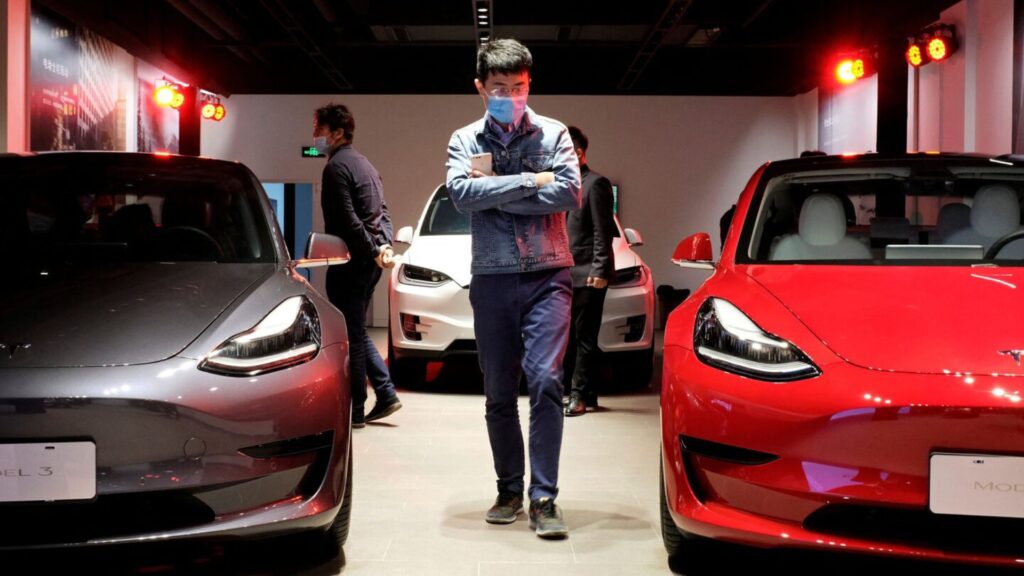The Goods and Services Tax (GST) Council has introduced one of the most significant tax reforms since the launch of GST in 2017. The new structure, effective from September 22, 2025, simplifies the system by reducing the number of tax slabs and eliminating the compensation cess. This reform directly impacts the automobile sector, particularly the luxury car market, which has long been burdened by high indirect taxes.

Premium brands such as Mercedes-Benz, BMW, Jaguar Land Rover (JLR), and Audi are expected to benefit from this rationalisation, leading to a noticeable decline in prices. Analysts believe that the reform may help expand India’s luxury car segment, which currently accounts for just about 1% of total car sales, despite India being the third-largest car market globally.
The Old vs. New GST Framework

Before Rationalisation
-
Cars powered by internal combustion engines (ICE) attracted a 28% GST.
-
A compensation cess of 17% to 22% was levied on luxury cars, depending on engine size and specifications.
-
This pushed the total tax burden on premium models to 45-50%, significantly inflating ex-showroom prices.
After Rationalisation
-
Only two standard slabs remain – 5% and 18%.
-
A new 40% slab applies to luxury and “sin” goods.
-
The compensation cess has been scrapped entirely.
-
Luxury cars now face a flat 40% tax rate, effectively reducing the burden by 5-10 percentage points compared to the earlier structure.
This streamlined system is expected to enhance compliance, provide clarity for manufacturers, and ultimately lower prices for buyers.
Short Summary Table
Key Point |
Details |
|---|---|
Effective Date |
September 22, 2025 |
Luxury Car GST Rate |
Flat 40% |
Earlier Tax Burden |
45-50% (28% GST + cess up to 22%) |
New Burden |
40% (no cess) |
Impact on Prices |
Reduction of 5-10% |
Brands Affected |
Mercedes-Benz, BMW, Audi, Jaguar Land Rover |
Market Potential |
Luxury share could rise from 1% to 3% |
Official Resource |
What the New Structure Means for Luxury Car Buyers
Reduction in Prices
Luxury vehicles from Mercedes-Benz, BMW, Audi, and JLR are now slightly more affordable due to the capped 40% tax. Even though the slab has formally increased, the elimination of the cess ensures that the total burden is lighter than before. Analysts forecast a 5-10% decline in effective tax rates, translating into reduced ex-showroom prices across premium segments.
Festive Season Boost
The timing of the reform is strategic. With implementation beginning on September 22, 2025, the first day of Navaratri, carmakers and dealers are preparing for stronger festive demand. Lower prices are expected to drive higher sales, particularly among first-time luxury car buyers who were previously hesitant due to the steep cost.
Expansion of Market Share
Currently, luxury cars account for only around 1% of India’s car sales. Industry executives argue that this figure should ideally be closer to 3%, given the size of India’s economy and car market. The GST rationalisation may provide the catalyst needed to expand this segment.
Wider Automotive Impacts
Small and Mid-Sized Cars
-
Small cars (under 4 metres, up to 1,200 cc petrol or 1,500 cc diesel engines) now attract 18% GST, compared to the earlier 28%.
-
Models like the Hyundai Creta and compact SUVs are set to become more affordable, boosting demand in the mass-market category.
Electric Vehicles and Auto Parts
-
Electric vehicles remain taxed at just 5%, ensuring continued government support for green mobility.
-
Auto components have been streamlined under a uniform 18% slab, reducing disputes and easing compliance.
Insurance and Other Sectors
The Council has also exempted premiums on health and life insurance, a move expected to benefit middle-class households while stimulating broader demand across the economy.
Frequently Asked Questions (FAQs)
1. When will the new GST rates apply?
A. The new GST structure comes into force on September 22, 2025, coinciding with Navaratri and the start of India’s festive sales season.
2. How are luxury cars classified under GST?
A. Vehicles with larger engines (over 1,200 cc for petrol, 1,500 cc for diesel), longer than 4 metres, and SUVs with higher ground clearance typically fall under the luxury category and attract the 40% slab.
3. Why are luxury cars cheaper despite being taxed at 40%?
A. Previously, luxury cars paid 28% GST plus 17-22% cess, taking the total up to 50%. Under the new system, the cess is eliminated and the overall tax is capped at 40%, leading to lower effective taxation.
4. Will small cars also benefit?
A. Yes, small cars now fall under the 18% GST slab, compared to the earlier 28%, making them significantly more affordable.
5. Are electric vehicles affected by the reform?
A. No. Electric vehicles continue to enjoy a 5% GST rate, reinforcing the government’s push for sustainable mobility.
6. What does this mean for the luxury car industry in India?
A. Industry experts believe that the lower tax incidence will boost sales, attract new buyers, and potentially triple the market share of luxury cars in India over the next few years.
Conclusion
The GST rationalisation marks a pivotal moment for India’s auto industry. For luxury brands like Mercedes-Benz, BMW, Audi, and Jaguar Land Rover, the reform translates into lower taxes and slightly more competitive prices. While the overall price reduction may not be dramatic, it could be enough to encourage more buyers into the luxury segment, especially during the festive season. Combined with broader affordability in the mass market and continued incentives for electric vehicles, GST 2.0 is poised to reshape India’s automotive landscape.
For More Information Click HERE






